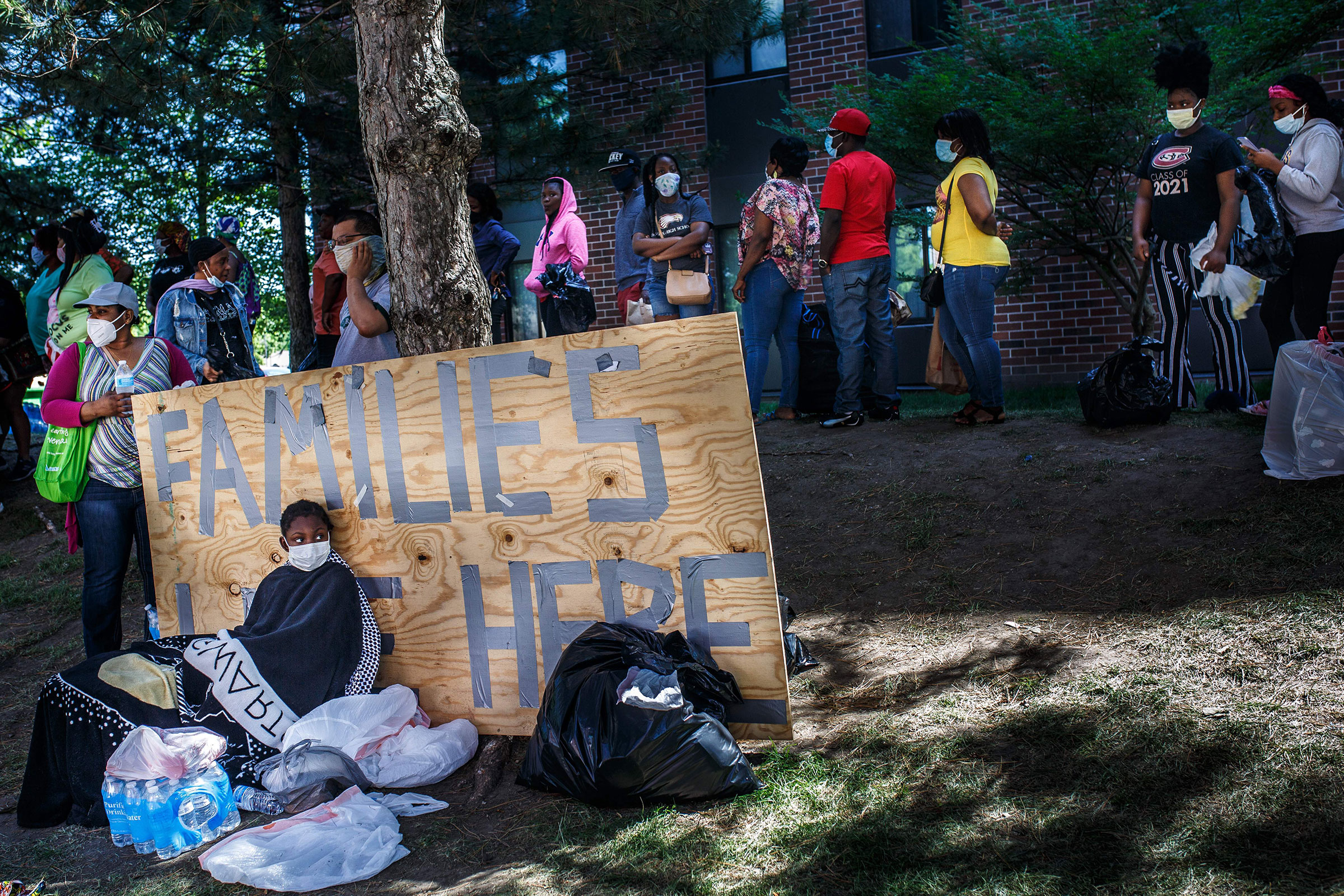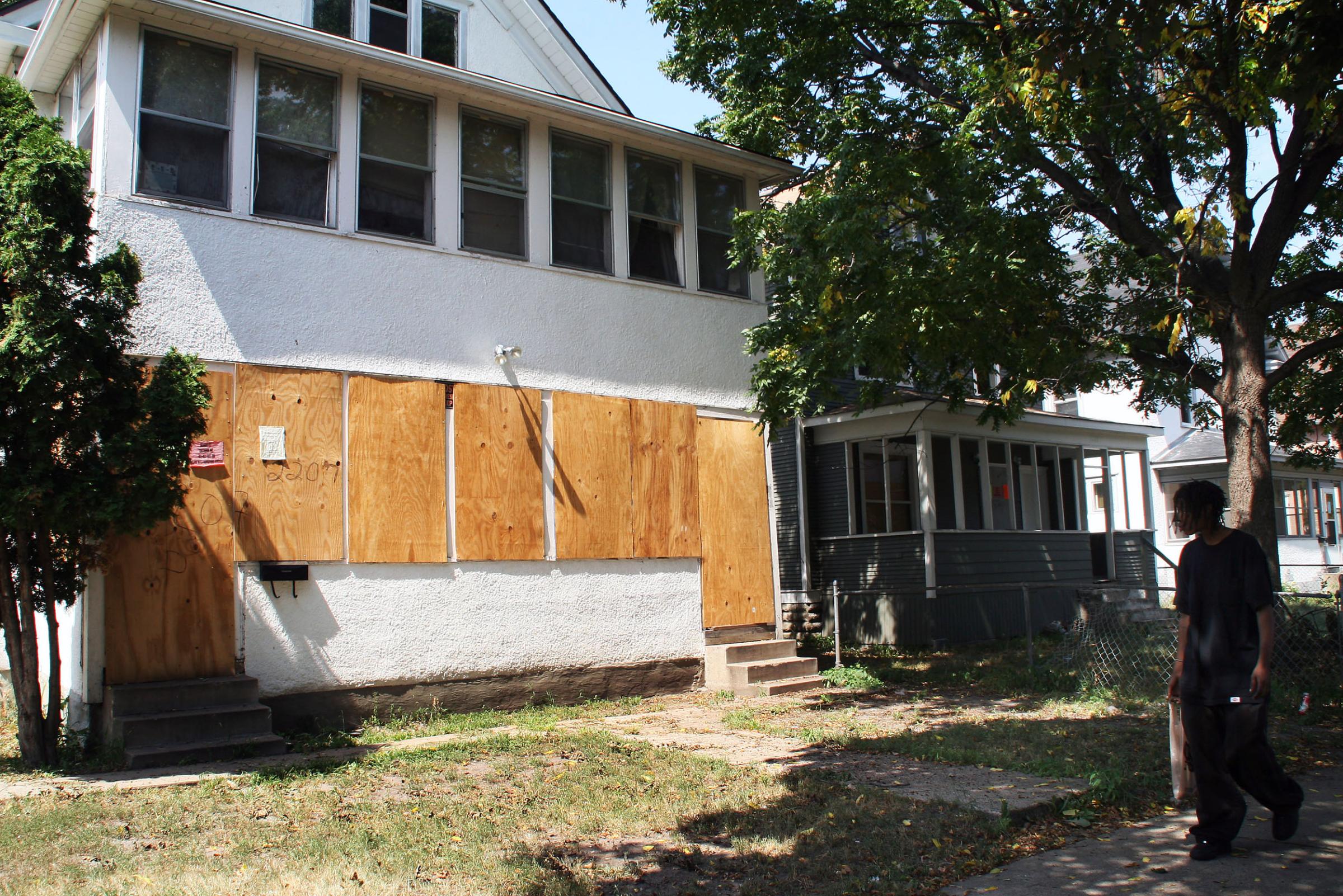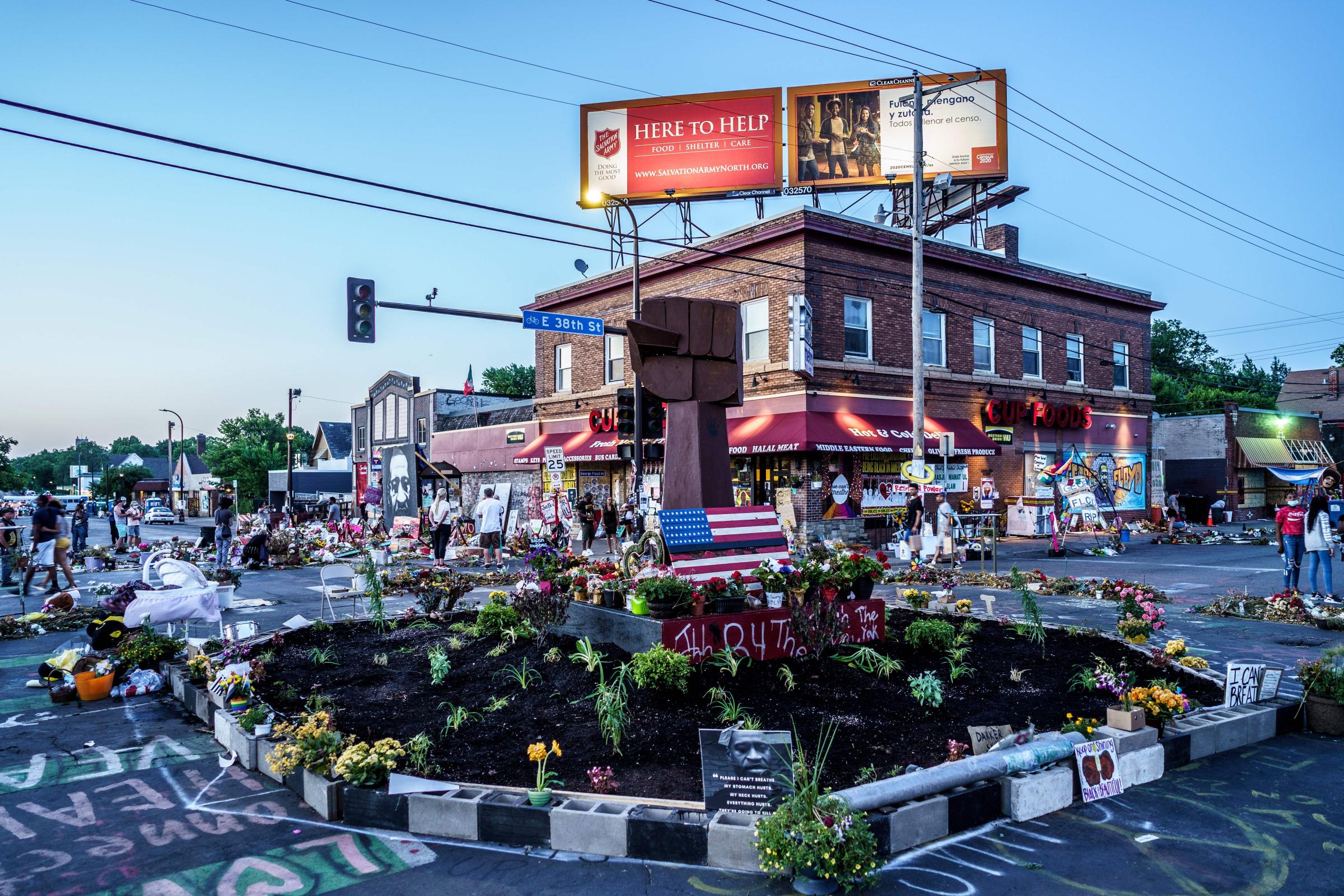
Minneapolis seemed full of opportunity when Roxxanne O’Brien moved there in 1987. She was just a kid, but her mother, a teacher, had heard that the school system was stellar and that it was looking for Black teachers. There was some racism then, sure—a neighbor forbade her son from playing with O’Brien because she was Black—but overall, the city seemed like a place where a Black family could succeed. Minnesota was—and still is—majority white, but it was also among the first states to outlaw segregation in schools, and its political leaders, including Hubert Humphrey, Eugene McCarthy and Walter Mondale helped usher in some of the legislative accomplishments of the Civil Rights Era.
But over time, O’Brien, now 37, noticed that Minneapolis seemed to have backslid on many of its commitments to integration. “If anything, we’re more segregated than we were then,” says O’Brien, a plaintiff in a class action lawsuit against the state of Minnesota that alleges that public school students are being denied an adequate education because of segregation by race and socioeconomic status in the Minneapolis and St. Paul School Districts. (The parties in the lawsuit are in mediation.)
Minneapolis has become the center of attention on racial issues because of its policing problems, but the city is also illustrative of a larger issue. Because of policy decisions at the federal, state, and local levels, Minneapolis, like many places in America, has become more segregated, not less, in the past three decades. As a result, Black Americans have been left behind in the nation’s economic growth.
Even before the COVID-19 pandemic, unemployment among Black people in the U.S. was far higher than among white people (6.0% versus 3.1% in January), and median household incomes were substantially lower ($40,258 versus $68,145 as of 2017). As the COVID-19 outbreak exploded across the U.S., the unemployment disparity continued: unemployment among Black workers rose to 16.8% in May, from 16.7% in April, as white unemployment fell to 12.4% from 14.2%.
The numbers reflect the long-term consequences of segregation, which has contributed to denying Black Americans the jobs, salaries and other opportunities that are key to upward mobility. “If you live in a segregated neighborhood, every single bad thing in the world happens to you: you don’t get a loan for housing, and the schools lead to jail,” says Myron Orfield, a law professor at the Institute on Metropolitan Opportunity at the University of Minnesota, who has documented the re-segregation of the Twin Cities. (Zero tolerance policies that impose severe punishments on Black students at schools have been found to create a school-to-prison pipeline.) “If you go to an integrated neighborhood, none of these things happen.”
In the Twin Cities, the number of schools in which more than 90% of students are people of color increased from 21 in 1998 to 102 in 2018. In 1999, after a gubernatorial election in which conservatives pushed back against the state’s school integration plan, Minnesota adopted a new policy that made it harder to prevent school segregation, Orfield says.
It’s not just schools. Orfield argues that in the 1980s and 1990s, the Twin Cities abandoned a plan created in the 1970s that required suburbs to provide a “fair share” of affordable housing. While the Twin Cities built 73% of all new subsidized housing in the suburbs between 1971 and 1979, which was the best record in the nation at the time, there was pushback from suburbs who saw integration as social engineering, and from cities who wanted more development near downtowns. Between 2002 and 2011, 92% of all subsidized, very low-income housing was built in the central cities of Minneapolis and St. Paul.
Of course, segregation is not just a Twin Cities problem; it has spread nationwide since federal, state, and local government entities began abandoning commitments to integration. Though hundreds of school districts were put into court-ordered desegregation plans in the wake of the 1954 Brown v. Board of Education Supreme Court decision, several court rulings in the 1990s cleared the way for districts to be released from these programs. Between 1990 and 2009, more than 200 districts were released from desegregation court orders, leading to an increase in school segregation, one study found. A Supreme Court decision in 2007 mandated that school districts that designed their own desegregation plans could not use race as a sole factor in efforts to integrate.
By 2016, 18.2% of public schools were between 90-100% nonwhite, compared to 5.7 % of schools in 1988, the year the U.S. reached peak school integration levels, according to the Civil Rights Project at UCLA.
Today, many neighborhoods and regions are just as segregated as they were decades ago. Subsidized housing has been concentrated in high-poverty, segregated neighborhoods, while affluent suburbs passed zoning laws keeping out low-income housing. Black families are still denied mortgages at a higher rate than white families; in 2017 the gap between Black and white homeownership rates was the highest it had been in 50 years.
Roxxanne O’Brien has seen the effects of this segregation firsthand. The neighborhood where O’Brien lives, which is majority-Black, had among the highest rates of foreclosures in the nation between 2004 and 2008. O’Brien says her mother lost her home to foreclosure in the run-up to the Great Recession. Her two eldest children attended Nellie Stone Johnson elementary, which according to the lawsuit, was 96% children of color; 93% of students received free and reduced lunch. The lawsuit says that public schools such as Nellie Stone Johnson deprived children of extracurricular activities, science equipment, art classes, computers and other “necessities and accoutrements of an adequate education.”

One thing the public school system did have was cops known as school resource officers, provided by the Minneapolis police department. (The school district recently announced it was canceling its contract with the department in the wake of protests over George Floyd’s death). Her son, J’siris, now 17, felt targeted by these officers, she told me; officers once sprayed him with Mace as they tried to break up a fight, she says.
A Minneapolis School District spokesman said he could not comment on the experiences of individual students for privacy reasons but said the district is working with school districts across the state on a plan called Reimagine Minnesota that seeks to create equity in education. But O’Brien says such plans have done little in the past.
“We’re still segregated,” O’Brien says. “Everybody thinks that something was solved back in the 60s, but no, it wasn’t really solved, it just changed form.”
Segregation doesn’t stop at school. It was, and still is, a problem in the workplace and in housing. For much of the 20th century, unless you were white, it was nearly impossible to get hired at most well-paying jobs, and if you did, the salary was sure to be lower than what white workers received. In 1959, the median income for Black males was 58% that of all American men. Even in the early 2000s, when researchers sent out fictitious resumes to employers, they found that resumes with “white” names like Emily and Greg got 50% more callbacks than those with “African American sounding” names like Lakisha and Jamal.
Black Americans trying to build wealth through the most traditionally American means — homeownership — have long faced obstacles. The Federal Housing Administration for decades refused to guarantee mortgages in and near Black neighborhoods, forcing Black Americans into “contract-for-deed” arrangements in which they were essentially renting, even though they were paying for improvements in their homes. Even if they had the money to buy, they couldn’t purchase homes in some American neighborhoods.
Audreyia Thibodeaux, who lives near Houston, has traced her family history back centuries. Her ancestors couldn’t accumulate wealth because of the dearth of opportunities—they were all sharecroppers and servants, she says. When her grandmother’s family was able to buy a three-bedroom home, the whole family crowded in, including Thibodeaux’s many aunts and uncles; it was where Thibodeaux — who recently learned that George Floyd was the nephew of one of her aunts — lived until 1995.
The cycle has repeated itself through the generations. Thibodeaux’s parents bought a home in a segregated area of Hempstead, Texas, in 1996, but at a high interest rate—10%, even though both had held steady jobs with the same employers for more than a decade. At the time, average interest rates on mortgages were closer to 8%. Thibodeaux attributes her parents’ high rate to racism, and surveys support her contention. Black Americans typically have a harder time getting approved for home loans than other races and are often targeted by high-risk lenders who charge higher rates.
Thibodeaux’s parents are still paying off the loan. That made it difficult for them to save money, so Thibodeaux took out loans to put herself through college and to get a master’s degree in counseling. She now owes $145,000 for her education. She was laid off from a counseling job in November and has been driving for Amazon Flex, a delivery service, since then. “Black life is hard—our stress levels are different, our anxiety levels are different, we were legally stripped of wealth,” says. “We should be a protected class, with policies and guidelines that speak to us as a group, and then maybe we can move this country forward.”
Government efforts to ameliorate wealth disparities have been largely ineffective and in some cases have actually heightened segregation. In 1986, as part of the Tax Reform Act, the federal government created a Low-Income Housing Tax Credit to incentivize the creation of affordable housing. But it let states decide how to assign those tax credits, and many states did not prioritize integration. They instead concentrated low-income housing in already poor neighborhoods, worsening segregation. Between 1995 and 2009, for instance, Texas did not award low-income housing tax credits for any family units in predominantly white census tracts, but instead assigned them to high-poverty segregated neighborhoods. (The Supreme Court in 2015 ruled that this method of assigning tax credits violated the Fair Housing Act.)

Efforts to reduce housing segregation by moving Black families to high-opportunity neighborhoods were limited. They included HUD’s Moving to Opportunity program, which gave thousands of families in public housing in a handful of cities vouchers to live in lower-poverty areas in the mid-1990s. (Similar programs still exist in Baltimore and Dallas as a result of court decisions.) But moving to the suburbs without a voucher and government assistance became more difficult over time as suburbs passed laws prohibiting the construction of affordable-housing units and fought plans for apartment buildings. Some cities resisted integrating Black and white neighborhoods as recently as 2015. Beaumont, Texas, for example, turned down federal funding to rebuild a majority-Black public housing complex because the federal government wanted it built in a richer and whiter part of town.
Where we live as children follows us into adulthood. In 2018, a landmark study of 20 million children born between 1978 and 1983 found that Black boys who had grown up in neighborhoods with low poverty, low levels of racial bias, and high rates of fathers present, had significantly higher incomes in adulthood than those who did not come from these neighborhoods. But only about 5% of Black children in the study grew up in such conditions, researchers found.
Persistent housing segregation also restricts access to good jobs. As the nation invested in highways, making it easier for upper-income families and jobs to move to the suburbs beginning in the 1960s and 1970s, Black workers were left behind. A few years ago, I talked to a 21-year-old man named Brastell Travis, who lives on Chicago’s South Side. It’s where the Acme Steel plant and General Mills factory had once provided job opportunities, until both closed. Despite a certificate in welding, Travis couldn’t find jobs in his field because they were all in the suburbs, he told me, and he couldn’t get to them without a car. Instead, he took a job stocking groceries. One study found that for every 10% decline in the share of jobs located in a central city, Black employment rates in the metro area dropped by 1.6 to 2.3%.
This helps explain why almost no progress has been made in reducing income and wealth inequalities between Black and white households over the past 70 years. The median wealth—essentially the net worth—of Black households in 2016 was $15,000, compared to $140,000 for white families.
There are some efforts underway to help Black Americans buy homes in diverse neighborhoods, which studies show are key to building wealth. Community land trusts, for instance, let low-income families buy homes on land owned by non-profits, which vow to use the land for the good of the community. This lets homeowners gain equity and ensures that the property remains affordable for future home buyers.
But the long history of segregation in America, and the financial disparities it created, means it will be generations before the wealth gap is eradicated. Parker Gilkesson, 27, bought her first home last year. Gilkesson grew up hearing stories of family members like her grandfather, who tried to buy a home in Bowie, Maryland, in the 1950s, but who could not find anyone willing to sell to a Black person. As an adult, Gilkesson was determined to not let history repeat itself. Besides, rents were rising in Washington, D.C., where she works, and she worried that she’d soon get displaced and have to leave.
Through the Neighborhood Assistance Corporation of America, which helps buyers who cannot afford large down payments and who lack ideal credit scores, Gilkesson was able to purchase a home in Baltimore. She loves her place and loves being a homeowner, and she is proud that she was able to achieve the dream that so many of her ancestors were denied. But even Gilkesson’s success is testament to the factors that continue to segregate America. Her new home is in a predominantly Black neighborhood—the white or mixed neighborhoods, she says, were way out of her price range.
More Must-Reads from TIME
- Cybersecurity Experts Are Sounding the Alarm on DOGE
- Meet the 2025 Women of the Year
- The Harsh Truth About Disability Inclusion
- Why Do More Young Adults Have Cancer?
- Colman Domingo Leads With Radical Love
- How to Get Better at Doing Things Alone
- Michelle Zauner Stares Down the Darkness
Contact us at letters@time.com